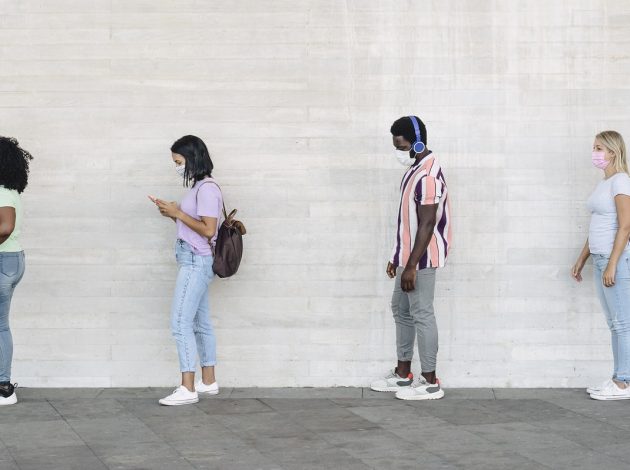What do the latest analyses from ONS and PHE tell us about ethnic inequalities in COVID-19?

During the first wave of the COVID-19 pandemic in England, people in some ethnic groups, particularly Black and Asian groups, were more likely to be infected, diagnosed and die with COVID-19 than people in the White group. The reasons for this are complex and recent reports by the Scientific Advisory Group for Emergencies (SAGE) and the Race Disparity Unit summarise the available evidence to date on reasons for the inequalities reported. It is critical that we understand the reasons in order that we can take steps to protect people from across the population. With so much analysis published, it can be difficult to keep up to date with what it shows. Here Chris White (Office for National Statistics) and Justine Fitzpatrick (Public Health England) summarise the latest reports.
What is the focus of the latest reports?
Both of these reports focus on the role of pre-existing health conditions as a possible explanation for higher numbers of COVID-19 cases and deaths in some ethnic groups than the White group. Higher prevalence, in some ethnic groups, of health conditions that are known to increase the risk of poor outcomes from COVID-19, such as diabetes, has been suggested as a possible contributing factor to poor outcomes.
Both reports define pre-existing conditions by a previous hospital admission mentioning one of the clinical conditions of interest in the clinical record. Some pre-existing conditions, especially those that are mainly treated by GPs such as hypertension, will not be identified in some people by this definition. However, the reports contain some interesting insights.
Although the analyses by ONS and PHE take different methodological approaches, the findings are very similar. The reports conclude that ethnic inequalities remain after pre-existing health conditions, as measured by previous hospital admission, have been taken into consideration.
Which ethnic groups have poor outcomes after taking into account pre-existing health conditions?
The ONS report is based on the number of deaths involving COVID-19 in the population: it has separate models including and excluding care home residents. The model excluding care home residents found that the relative rates of death (hazard ratios) involving COVID-19 for males and females were significantly higher than the White group for the following minority ethnic groups: Black African (2.5 and 2.1 times respectively), Black Caribbean (1.7 and 1.3 times), Indian (1.4 and 1.2 times), Pakistani (1.3 and 1.3 times) and Other ethnic background (1.5 and 1.3 times). This was after accounting for several geographical, socioeconomic, occupational and household circumstances. The additional inclusion of pre-existing health conditions was unable to account further for these significant raised rates of death.
To understand the reasons for high death rates in these groups and how they might be prevented, it is necessary to dig a bit deeper. Death rates from COVID-19 in the population are determined by a combination of the risk of getting COVID-19 (of becoming a case) and survival (or risk of dying once diagnosed). The PHE report analyses these components separately.
The table below summarises the findings from both reports. It identifies which ethnic groups had a high population death rate (from the ONS report) and compares this with the groups which had a high risk of dying once they were diagnosed with COVID-19 (from the PHE report). The table also shows, among those with a pre-existing health condition, those ethnic groups which had a higher number of cases or deaths than expected based on the rates for all people with the conditions.
| Males – Population death rate 1 (ONS) | Females – Population death rate 1 (ONS) | Number of cases compared with number expected 2 (PHE) | Number of deaths compared with number expected 2 (PHE) | Risk of dying in people who have COVID-19 1 (PHE) | |
|---|---|---|---|---|---|
| All ethnicities | n/a | n/a | (ref)3 | (ref)3 | n/a |
| White | (ref)3 | (ref)3 | Low | Low | (ref)3 |
| Bangladeshi | High | Similar | High | High | High |
| Chinese | Similar | Similar | Low | High | High |
| Indian | High | High | High | High | High |
| Pakistani | High | High | High | High | High |
| Black African | High | High | High | High | Similar |
| Black Caribbean | High | High | High | High | Similar |
| Mixed | High | Similar | High | High | Similar |
| Asian Other | High | High | High | High | Similar |
| Black Other | High | High | High | High | High |
| Other | High | High | High | High | Similar |
1Adjusted for structural factors and the prevalence of pre-existing conditions
2Among people with pre-existing health conditions
3(ref) = the group used for comparison
The risk of being infected with COVID-19 is primarily determined by exposure to the virus and is therefore influenced by numbers of social contacts and broader social circumstances such as housing and occupation. However, diagnosis is confirmed by a positive test for COVID-19 which will also be influenced by the number of people getting tested. Higher testing in an ethnic group will result in higher numbers of COVID-19 cases.
The PHE report shows that, among people with a pre-existing health condition, there were more cases in all ethnic minority groups (apart from Chinese) than would be expected if they had the same rate of diagnoses as all ethnic groups combined. It also shows that, among people with a pre-existing health condition, there were more COVID-19 deaths in all ethnic minority groups than would be expected if they had the same death rate as all ethnic groups combined.
The risk of dying from COVID-19 once diagnosed is determined by factors that affect survival. Age and sex are known risk factors that affected survival during the first wave, with poorer outcomes in older people and males. However, as the SAGE report summarises, there are other factors that may affect survival, including access to health care following diagnosis.
The PHE report shows that, among all those with COVID-19, the poorest survival was seen in the Bangladeshi ethnic group who had 1.88 times the odds of dying once diagnosed than the White ethnic group (after adjusting for age, sex, deprivation, region, testing pillar[1], time since start of the epidemic and pre-existing health conditions). The Pakistani, Chinese, and Black Other ethnic groups had 1.35-1.45 times the odds of dying once diagnosed, and the Indian group 1.16.
What do these differences mean?
People of Bangladeshi, Pakistani, Indian and Black Other ethnicities had both higher numbers of cases than expected and lower survival. This means that these groups had both a high risk of getting COVID-19 and a high risk of dying once diagnosed, which contributed to their high population death rates reported by ONS.
People belonging to the Black African, Black Caribbean, Asian Other, Mixed and Other ethnic groups had higher numbers of cases than expected, but similar survival to the White ethnic group. The high death rates reported by ONS for these groups are therefore likely to be largely determined by a high risk of getting COVID-19 rather than a high risk of dying once infected.
The Chinese group had a lower number of cases than expected, but poorer survival. This combination resulted in overall death rates similar to, or slightly higher than, the White group. The ONS and PHE results are not completely consistent for this group which could be due to the relatively small size of the Chinese population in England.
These findings will help focus where interventions may help to improve COVID-19 outcomes for communities as we move through winter and the second wave.

Head of health inequalities analyses, ONS
[1] Pillar 1 and 2 only. Pillar 1 – PCR (Swab) testing in PHE labs and NHS hospitals for those with a clinical need, and health and care workers. Pillar 2 – PCR (Swab) testing in commercial laboratories for the wider population